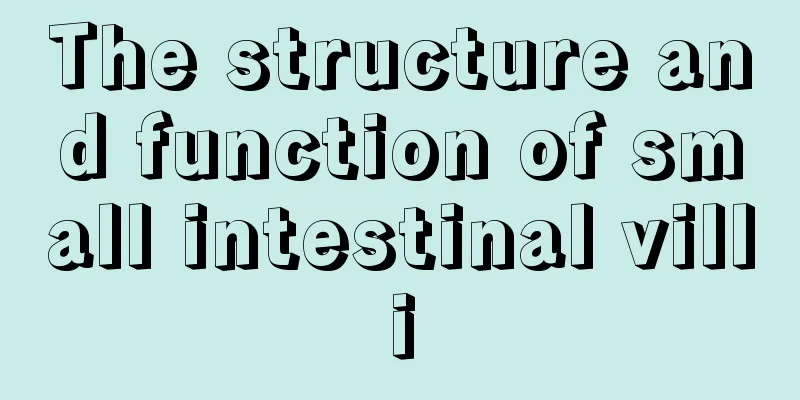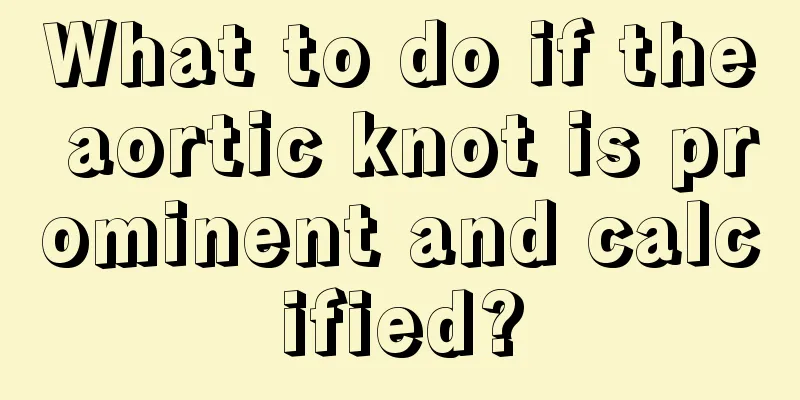The structure and function of small intestinal villi

|
Most people may not know what the structure of the small intestine is, but people with a certain amount of medical knowledge should know that the surface of the small intestine is not actually smooth but has a layer of villi. The role of the small intestinal villi in the human body is very important and indispensable. Therefore, when there is a problem with the small intestine, it will seriously affect a person's normal digestion and absorption function. The following will introduce to you the functions and effects of the small intestinal villi. Small intestinal villi The inner surface of the small intestine wall has a large number of circular folds, and on the folds there are many villus-like protrusions called intestinal villi. The villi of the small intestine grow on the small intestine. The function of the villi of the small intestine is to increase the absorption area of the small intestine by nearly 600 times, and also play the role of filtering substances. Small intestinal villi: a leaf-like structure formed by the lamina propria and epithelium protruding into the intestinal cavity. The mass-like structure free in the intestinal cavity is the cross section of the villi. Compared with the glands in the small intestine, what are the characteristics of the villi: In the center of the villi, a larger lumen can be seen, and the central lacteal duct composed of a single layer of endothelium, that is, the capillary lymphatic vessel. There are scattered smooth muscle bundles around the tube. The wall of the villi of the small intestine is composed of only one layer of epithelial cells, so it is only one cell thick. The villi of the small intestine are filled with a network of microvessels. This structural feature is beneficial for the small intestine to absorb nutrients. The small intestine is the main site for digestion and absorption, and is also the most important absorption organ. The epithelial cells of the small intestinal villi absorb amino acids, glucose, inorganic salts, etc. in the digestive tract into the blood. If this part is damaged, the absorption of the above nutrients will be affected, and nutrients such as soluble sugars can be detected in the feces. |
<<: What happens if you smoke after liposuction
>>: Will starch turn into fat?
Recommend
What are the symptoms of colorectal cancer
Colorectal cancer is usually asymptomatic in the ...
Too hot to sleep
One of the main reasons why people don’t like sum...
Simple diet therapy suitable for recuperation of rectal cancer patients
After rectal cancer surgery, patients may also ex...
What are the risk factors for colorectal cancer?
With the progress of the times, people's livi...
What to do if your face peels with red bean and barley porridge
Red bean and coix seed porridge is a kind of porr...
How long does targeted therapy last for gastric cancer patients? Pay attention to these
Targeted therapy is generally used when the cance...
What should liver cancer patients eat on a daily basis? Five dietary principles for liver cancer patients to pay attention to
What should liver cancer patients eat? Many peopl...
What to check for gallbladder cancer
For every disease, only through instrument examin...
How to wear a disposable mask correctly
We all wear masks at ordinary times, especially i...
What are the symptoms of testicular cancer? What are the dangers of testicular cancer?
In normal times, male friends need to pay more at...
How long can cooked meat be kept
The shelf life of cooked pork or other meat is re...
What are the symptoms of bile reflux?
Bile reflux is very common in some serious gastro...
Is 9.6 after a meal high? Is your blood sugar up to standard?
The most important task for diabetic patients is ...
What is the cause of bleeding between teeth
The phenomenon of bleeding between teeth needs to...
What is the usage and dosage of dapoxetine hydrochloride tablets
Dapoxetine hydrochloride tablets are a common dru...









